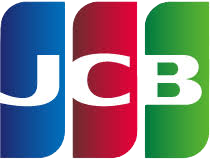Traveling with a paper map may seem old-fashioned, but it offers unique benefits and skills that enhance the travel experience. Here’s a detailed guide to help you navigate confidently with a paper map.
Why Travel with a Paper Map?
Reliability: Paper maps don’t depend on battery life or signal strength.
Skill Development: Enhances navigation skills and spatial awareness.
Nostalgia and Tangibility: Provides a physical connection to your journey.
Broad Overview: Offers a comprehensive view of the area, making it easier to understand the geography.
Traveling with a paper map is a reliable choice as it doesn’t rely on batteries or signal strength. It also helps develop essential navigation skills and provides a tangible connection to your journey. Paper maps offer a broad overview of the area, making it easier to grasp the geography and plan your route effectively.
Choosing the Right Map
Scale and Detail: Choose a map with the appropriate scale for your needs.
Current Edition: Ensure the map is up-to-date.
Special Features: Look for maps with additional information, like trails and tourist attractions.
Selecting the right map is crucial. Ensure it has the right scale and level of detail for your trip. Always use the latest edition to avoid outdated information. Maps with unique features, such as hiking trails and tourist attractions, can provide valuable insights for your journey.
Understanding Map Symbols and Legends
Key Symbols: Learn the symbols for roads, landmarks, and natural features.
Legend Use: Use the legend to interpret the symbols and scale accurately.
Contour Lines: Understand contour lines to recognize elevation changes.
Familiarize yourself with the symbols and legends on your map. The legend will help you interpret these symbols and understand the map’s scale. Learning to read contour lines will also allow you to recognize elevation changes and navigate different terrains effectively.
Basic Map Reading Skills
Orienting the Map: Align the map with your surroundings.
Determining Your Location: Use identifiable features to pinpoint your position.
Plotting a Route: Mark your starting point and destination, then plan your route.
Basic map reading skills are essential. Start by orienting your map to align with your surroundings. Use identifiable features such as rivers or buildings to determine your location. Plot your route by marking your starting point and destination, considering distance and terrain.
Using a Compass with Your Map
Choosing a Compass: Select a compass with a rotating bezel and clear baseplate.
Taking a Bearing: Learn to take a bearing to navigate accurately.
Following a Bearing: Follow the direction indicated by the compass.
A compass is a vital tool for map navigation. Choose one with a rotating bezel and a clear baseplate. Learn to take and follow a bearing, which involves aligning the map, compass, and landmark to navigate accurately.
Practical Tips for Map Travel
Weather Protection: Use a map case or waterproof bag.
Mark Your Map: Use a pencil for notes and route marking.
Practice: Practice map reading in familiar areas before your trip.
Practical tips can enhance your map travel experience. Protect your map from weather damage with a map case or waterproof bag. Mark routes and notes with a pencil for easy updates. Practice map reading in familiar areas to build confidence before your trip.
Advantages Over Digital Maps
Battery-Free: Paper maps don’t run out of power.
Broad Perspective: Provide a more comprehensive view of the area.
Privacy: Paper maps don’t track your movements.
Paper maps have several advantages over digital ones. They are battery-free, providing a reliable option in remote areas. They offer a broader perspective, helping you understand the overall layout of your journey. Additionally, they ensure privacy, as they don’t track your movements or collect data.
Common Challenges and How to Overcome Them
Misreading the Map: Regular practice improves proficiency.
Weather Damage: Always carry a waterproof map case.
Orientation Issues: Use a compass and landmarks to stay oriented.
Traveling with a paper map can present challenges. Regular practice can avoid misreading the map. Protect your map from weather damage with a waterproof case. To stay oriented, use a compass and visible landmarks.
Combining Paper Maps with Modern Technology
Dual Navigation: Use paper maps alongside GPS.
Backup Plan: Keep a digital backup for emergencies.
App Integration: Scan paper maps for digital use.
Combining paper maps with modern technology offers the best of both worlds. Use paper maps alongside GPS for comprehensive navigation. Keep a digital backup for emergencies, and consider scanning paper maps for easier access on your device.
Traveling with a paper map offers a reliable, skill-enhancing, and deeply connected travel experience. You can confidently navigate without relying on technology by choosing the right map, mastering basic navigation skills, and understanding how to use a compass. Embrace traditional navigation and enjoy the unique experiences it brings.







Nemo enim ipsam voluptatem quia voluptas sit aspernatur aut odit aut fugit, sed quia consequuntur magni dolores eos qui ratione voluptatem sequi nesciunt.
Duis aute irure dolor in reprehenderit in voluptate velit esse cillum dolore
https://vitz.ru/forums/index.php?autocom=gallery&req=si&img=4811
https://vitz.ru/forums/index.php?autocom=gallery&req=si&img=4841
http://terios2.ru/forums/index.php?autocom=gallery&req=si&img=4579
https://honda-fit.ru/forums/index.php?autocom=gallery&req=si&img=7223
https://myteana.ru/forums/index.php?autocom=gallery&req=si&img=6800